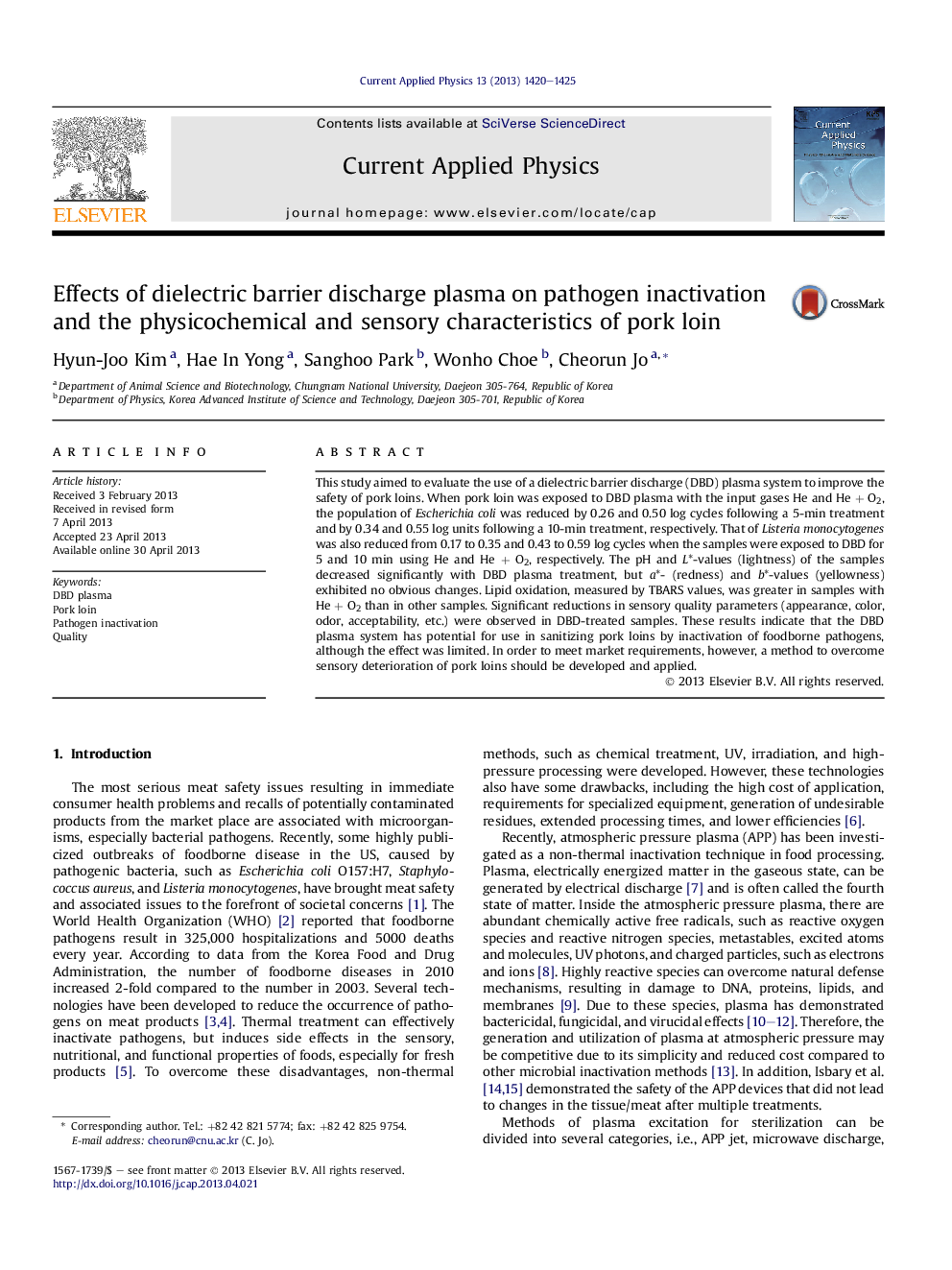| Article ID | Journal | Published Year | Pages | File Type |
|---|---|---|---|---|
| 1786459 | Current Applied Physics | 2013 | 6 Pages |
•We evaluated the use of DBD plasma system to improve safety of pork loins.•DBD plasma treatment reduced number of pathogens significantly.•pH, color, lipid oxidation and sensory quality of pork loins were changed.•DBD plasma has potential for sanitizing pork loins.•The methods to overcome sensory deterioration should be developed and applied.
This study aimed to evaluate the use of a dielectric barrier discharge (DBD) plasma system to improve the safety of pork loins. When pork loin was exposed to DBD plasma with the input gases He and He + O2, the population of Escherichia coli was reduced by 0.26 and 0.50 log cycles following a 5-min treatment and by 0.34 and 0.55 log units following a 10-min treatment, respectively. That of Listeria monocytogenes was also reduced from 0.17 to 0.35 and 0.43 to 0.59 log cycles when the samples were exposed to DBD for 5 and 10 min using He and He + O2, respectively. The pH and L*-values (lightness) of the samples decreased significantly with DBD plasma treatment, but a*- (redness) and b*-values (yellowness) exhibited no obvious changes. Lipid oxidation, measured by TBARS values, was greater in samples with He + O2 than in other samples. Significant reductions in sensory quality parameters (appearance, color, odor, acceptability, etc.) were observed in DBD-treated samples. These results indicate that the DBD plasma system has potential for use in sanitizing pork loins by inactivation of foodborne pathogens, although the effect was limited. In order to meet market requirements, however, a method to overcome sensory deterioration of pork loins should be developed and applied.
